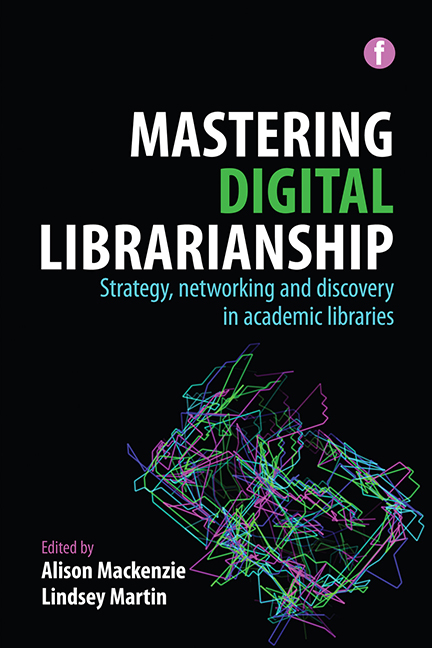3 - A service in transition: how digital technology is shaping organizational change
Published online by Cambridge University Press: 13 September 2022
Summary
Introduction
As devices and connectivity become increasingly affordable and portable they have transformed how we do business, learn, organize our leisure time and manage our relationships. Inevitably, these technological innovations have been longterm drivers of change within academic libraries. It is now for example, nearly two decades since the emergence of the ‘hybrid library’: a physical library, performing traditional roles but also delivering services in digital as well as print format. Digital technologies have also enabled libraries to transform their operations and make considerable efficiency savings while continuing to expand their services. Yet there is a real risk that much of what academic libraries do is invisible to users in a virtual environment, resulting in ‘a strong feeling among senior librarians that they have failed effectively to communicate the value of their services to those who fund and use them’ (RIN and SCONUL, 2010, 16).
Past practices at marketing library services are seemingly no longer meeting the needs of users who increasingly live in a digital world. The emergence of the social web, characterized by usergenerated connections, conversations and content, is causing many libraries to rethink how they develop and manage their relationships with users. As a consequence, many academic library services are now being reconfigured with resources (staff and content) being moved to where there is greatest impact – to those services that support the learning lives and workflows of their users.
This chapter describes how one UK academic library has through strategy and service planning sought to refocus attention on the user. In a critical appraisal of the distance travelled, it will discuss the importance of understanding library users’ behaviour and workflows, the role of strategic marketing, how the use of digital and social media supports the library ‘brand’ and how all staff have a role to play in terms of advocacy and relationship management.
Framing the discussion
Strategy and focus
In a world increasingly shaped by digital technologies and, at this time in the UK, by austerity, fresh thinking is needed to understand what a library now means and what it does to ensure that its strategic focus is on resourcing those areas that will have the biggest impact on users (RIN and SCONUL, 2010).
Information
- Type
- Chapter
- Information
- Mastering Digital LibrarianshipStrategy, networking and discovery in academic libraries, pp. 41 - 62Publisher: FacetPrint publication year: 2014
